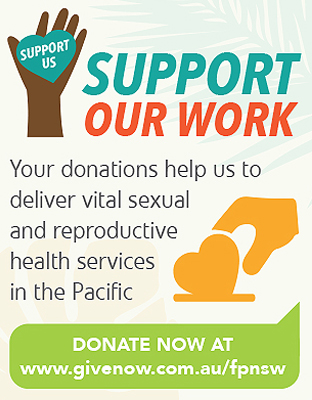Medical abortion access during COVID-19
New data looking at access to medical abortion during the early stages of the COVID-19 pandemic shows Family Planning NSW provided 860 medical abortions between April 2020 and September 2021, with 158 occurring (18%) through telehealth and 702 (82%) through face-to-face healthcare at one of our clinics.
The data, extracted from a forthcoming study initiated by the Family Planning NSW Research Centre, demonstrates medical abortion uptake by clients from priority health populations, including young people under 29 (528 or 63%), people speaking a language other than English at home (102 or 12%) and Aboriginal and Torres Strait Islander peoples (65 or 8%). Almost 1 in 4 people (202 or 24%) accessing Family Planning NSW medical abortion services lived in regional and remote areas.
The release of the data coincides with International Safe Abortion Day and Family Planning NSW Medical Director Dr Clare Boerma said it was fitting to have transparent information around medical abortion and its availability during the pandemic made public.
Dr Boerma said the first 18 months of the COVID-19 pandemic dramatically shifted the way care was delivered.
"Family Planning NSW began providing abortion services in January 2020 and just a few months later, COVID-19 reached our shores and we needed to really adapt how we continued to care for patients," Dr Boerma said.
"We committed to maintaining our face-to-face appointments while rapidly introducing telehealth options, which proved essential for people facing an unexpected pregnancy who could not easily travel to our clinics.
"While COVID-19 lockdowns and isolation requirements presented unique access issues, the increased access to telehealth bolstered healthcare options for some patients, particularly people living in rural and remote areas.
"It's interesting to see that face-to-face consultations remained the most popular model for abortion care for our patients but the availability of Medicare-rebated telehealth services for all patients supported access to essential healthcare during the COVID-19 pandemic and gave patients more choice about how they received care."
Use of medical abortions via telehealth peaked in April 2020, declining sharply in July when Medicare rebates for telehealth appointments with primary care providers were largely restricted to pre-existing patients only.
These restrictions to telehealth for reproductive and sexual health services were lifted in July 2021 after sustained advocacy by healthcare providers, and not surprisingly, we saw the use of telehealth increase by many of our clients, including those accessing abortion care.
"It's vital that all people can access safe abortion services through flexible and diverse models of care," Dr Boerma said.
- ends -


